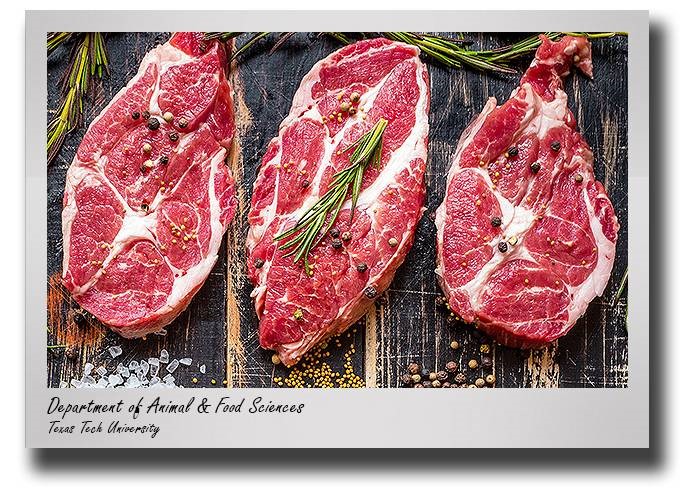Better understanding of differences between marbling and subcutaneous fat in cattle could lead to technologies that increase marbling without compromising cattle health.
September 12, 2019

The desire to find the juiciest piece of beef, be it a steak or ribs or roast, isn't limited to just the restaurant and how it is seasoned or cooked, according to an announcement from Texas Tech University. The process starts well before that, when the cattle are alive, being raised and fed, including how and what they are fed.
The more ranchers can increase the marbling in beef cattle, the better the beef and the higher the price the animal can fetch at auction or when it is sold, Texas Tech said. However, increasing the marbling in beef is a tricky undertaking, with numerous factors in play.
Brad Johnson, the Gordon W. Davis regent's chair in meat science and muscle biology in the Texas Tech department of animal and food sciences, hopes to unlock one of those secrets to beef marbling without making the cattle fatter and unhealthy, the announcement said.
Thanks to a $239,693 grant from the U.S. Department of Agriculture, Johnson and other researchers hope to identify the means by which development of intramuscular adipose tissue, or marbling, can be promoted without also increasing subcutaneous adipose tissue, or back fat. The grant is sponsored by the USDA National Institute of Food & Agriculture's (NIFA) Cooperative State Research Education & Extension Service and Texas AgriLife Research.
"This research would improve the sustainability of beef production worldwide if we can find novel ways to improve marbling without increasing the obesity or adiposity of the cattle," Johnson said.
The key, according to Johnson, could lie in activating a key receptor, the G-coupled protein receptor (GPR43), that is present in significant levels in intramuscular adipose tissue but not in subcutaneous adipose tissue.
"If we can find the ligands that bind to the receptors that activate the response in intramuscular adipose, it won't have the same effect in subcutaneous because it is lacking that receptor," Johnson said.
In recent studies, Johnson and fellow researchers have discovered that oleic acid -- a fatty acid that has been shown to have positive effects on human health, such as controlling cholesterol and reducing cardiovascular issues -- strongly affects GPR43 activation, the announcement said. They hypothesized that oleic acid could be the key ligand that binds to the GPR43 receptors, therefore increasing lipid accumulation in adipose tissue, or increasing marbling in beef without activating subcutaneous adipose tissue.
For this research, Johnson will use different models to test the hypothesis both in the laboratory with cell culture models and also with cattle themselves during different stages of growth. Johnson's lab has the ability to grow intramuscular adipose tissue and subcutaneous adipose tissue in order to test the theories.
"We will do a lot of comparing and contrasting of different factors and look at different novel compounds," Johnson said. "We will see how they respond and are able to turn on marbling adipose. It is a multifaceted approach using beef cattle and also cell culture techniques."
If successful, Johnson said, an increased understanding of the differences between the two types of adipose tissue could lead to specific technologies that would increase marbling without compromising the health of the cattle and do so in a way that is financially advantageous for cattle ranchers and beef producers.
Source: Texas Tech University, which is solely responsible for the information provided and is wholly owned by the source. Informa Business Media and all its subsidiaries are not responsible for any of the content contained in this information asset.
You May Also Like


.png?width=300&auto=webp&quality=80&disable=upscale)
